Diablo III: Reaper of Souls Beta: Hands-On Impressions
Though Blizzard opened the gates to the
Reaper of Souls beta a month ago, we've finally gotten our hands on the exclusive preview to the upcoming expansion for
Diablo III set to release in late March of next year. After grinding the new Crusader class through the base game and Act V, we have seen what the additional content has to offer along with the fabled Patch 2.0 changes, here is a glimpse of what to expect.
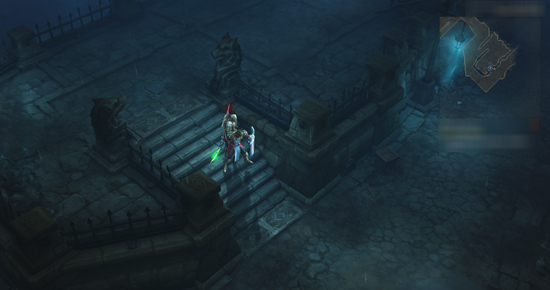 The Crusader
The Crusader
Fueled by his faith in Zakarum, following the path laid before him by previous Crusaders and the prophet Akarat; the Crusader class is a remarkably powerful titan when compared to the five base classes of
Diablo III. It is the one class which can quite literally do anything and fulfill whatever role necessary at a moment's notice infusing the Crusader with esteemed versatility whether playing solo or multiplayer. Melee capable, check. Ranged capable, check. Offensive spells, check. AE abilities both weapon based and spell based, check. Tank ability, check. Charging attack, check. Rooting ability, check. Taunting skill, check. Summon spell, check. Party bonus skills, check. A passive skill allowing players to wield 2-handed weapons in a single palm, check. The class is honestly the most versatile among the bunch being able to fulfill any role, from tanking, to dealing massive amounts of damage, or providing support for a group of players; playing through the game as a Crusader truly felt like cheating. It can do anything, and does it all quite well. Considering that the class is not only unanimously versatile, it also comes with a number of interesting and unique skills such as the Steed Charge which summons a celestial mount that charges through enemies unimpeded. At first runeless, Steed Charge is simply an escape button, none the less there are runes that turn the skill into a crowd-splitting attack.
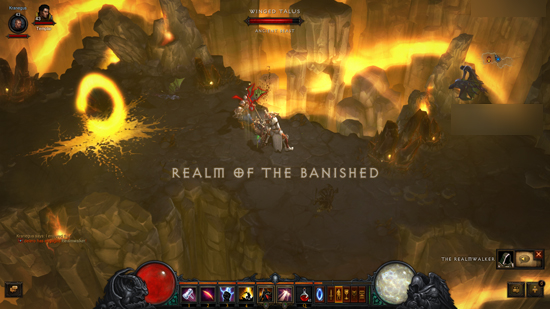 Adventure Mode
Adventure Mode
As a mode, Adventure Mode simply unlocks each act and their subsequent waypoints. Thus allowing, as advertised, non-linear gameplay which lets players explore the game not only at their own pace but with their own unabated direction. However, within that mechanic lie not only Bounties, but the easiest access to Nephalem Rifts. All of which put the imperative on Blizzard to re-design waypoints. Though the waypoints are the same within the game, the way in which they are accessed has changed as Blizzard sacked the scroll-menu for a graphically interactive map. The map not only gives an added sense of location and navigation, it furthermore acts as an interface to find and hunt down bounties or Nephalem Rifts.
Bounties as you can intuit, are urgent quests within a specific area of the game. Simply open your waypoint map (at any time, any where), select a Waypoint with an indicated bounty and slay what you're told. In similar fashion to
World of Warcraft quests, these bounties require that you slay a specific number of monsters along with an Elite somewhere in that area, a Rare or Unique creature. Upon completion players are awarded with experience, gold, and Blood Shards which act as currency for random Rare items that can be purchased off one of two vendors.
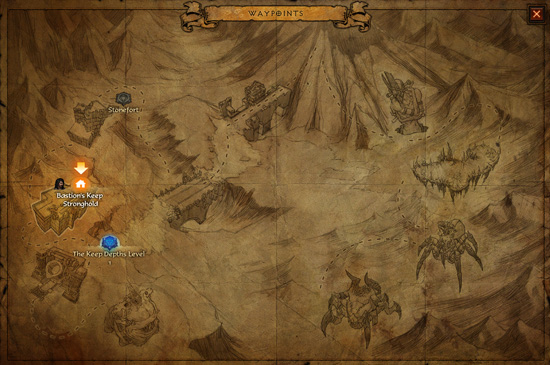
Nephalem Rifts on the other hand offer an extra-dimensional, randomly generated dungeon-crawl. Though they aren't very large, with a couple achievements suggesting they can be completed in as little as 30 seconds to a minute, they span an area equivalent to the two-level dungeon founds throughout the game, strictly in surface area. The meat of these Rifts are the creature density and variety. They are host to hordes of regular monsters but also numerous Elites; whether Champion packs, Rares, or Uniques. They also frequent a boss creature towards the zone out of the Rift. Given the density and variety of creatures, Naphalem Rifts are loot-drop oriented dungeon crawls that pay homage to the
Diablo titles of the past as their layouts are randomly generated, and therefore continually unique.
Loot 2.0
Which leads us to not only the most advertised, but most anticipated aspect of only the expansion and Patch 2.0, which will revamp the base game simultaneously with the release of
Reaper of Souls.
First off, crafting has been re-envisioned, though slightly. From armor and weapons to gems, pages are a thing of the past. Though tomes still exist, they are only used to craft items now; training only costs gold. Other crafting materials that can be salvaged or dropped have furthermore been streamlined by reducing the hierarchy system in
Diablo III. The normal materials have been reduced to Common Debris, magic to Exquisite Essence, and thus far I've only run across two rare materials; one of which is used to craft gems at Perfect and beyond. However, the greatest impact to crafting will be the introduction of not only craftable Legendary items, but Sets. That's right, green has returned as an item identification color. To which, these unique pieces of gear will require Legendary crafting materials. If you are expecting to easily craft a Legendary item or set piece, think again; acquiring the requisite materials for these items will be grind, though rightfully so.
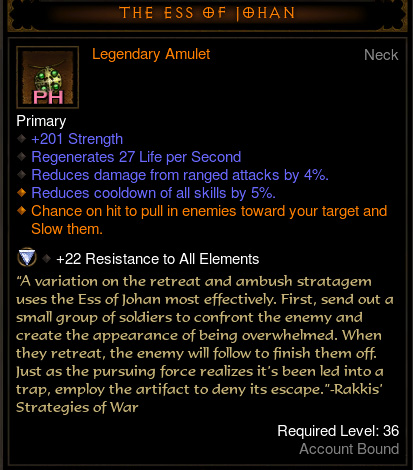
For loot drops, Loot 2.0 is a completely different experience. Smart drops actually work, having played a character through the entire game in beta, I can contest to the fact that overwhelmingly the items that dropped had statistics geared towards my class, even the Legendaries that dropped were all useful to the Crusader. The only quark in the system I witnessed occurred when an Armor Rack I interacted with yielded a weapon, not so smart. However, the Smart drop system as a mechanic that considers your class and it's core statistics in regards to loot works and quite well.
The question that lingers for the beta though, is the drop rate as it is significantly increased when compared to the live state of
Diablo III. Elites yield a far greater number of magical items. Champion packs drop on average three items, when they commonly yield one or two on live. Rares and Uniques average about the same, though many of the ones slain throughout my play-through dropped four; of which one or two were rare items. The major and minor bosses throughout the game dropped an equivalent number of items reflective of the live state, but dropped a legendary each (though it is speculated that this will only occur on first-kill). None the less, having played each class through the game on live I've seen two legendaries drop prior to Nightmare.
During the beta I witnessed eight legendary items drop throughout five acts, let alone five characters playing through four acts each. Of course the content is still in a beta test, as a consideration we can't know for sure if the current drop rates reflect the release state for
Reaper of Souls. Regardless, as the beta stands my inventory was swimming in a sea of magical and rare items; antiquating the necessity for magic-find gear when you include Adventure Mode. Rare items were also found in vendor inventories, usually two weapons and two pieces of armor, where in live only a couple vendors throughout the entire game had rare items for sale. Granted we suspect that the greater volume of loot seen in the beta is to give a greater glimpse of how Loot 2.0 works through not only Smart Drops but also statistical increases. Only time will tell if the drop rates experienced in beta are reflective of the release state.

The last bit are the statistics, which are greatly increased when compared to live loot, thereby greatly increasing the power of your character. By greatly increased, I mean by a factor or three or four in attribute multipliers. For legendary items, by a factor of 10 if not slightly more. Legendaries are furthermore endowed with non-statistical effects; one grants attacks the chance to both slow and pull creatures towards you, another allows you to Town Portal uninterrupted by incoming damage while reducing damage taken by 50% when casting Town Portal.
Less Advertised Changes from Patch 2.0
These lesser aspects, though not as impactful as Loot 2.0 none the less change parts of the game significantly.
The difficulty system has been completely redesigned. Instead of unlocking tiers of difficulty as you play through game, three tiers are already unlocked while the other two are level based. Gone are the days of Normal, Nightmare, Hell, and Inferno. They have been replaced by Normal, Hard, Expert, Master (unlocked at 60), and Torment (unlocked at 70). Rather than simply making the game harder, these new difficulties also offer greater reward for a greater risk by increasing experience gain, amount of gold drops, and the amount of Blood Shards paid out when completing bounties. They also have tangible sentiments of difficulty. While grinding the Crusader through the game, I played on Normal for a baseline of difficulty while also wanting to rush through the base game as quickly as possible; a challenge never presented itself, combat was a breeze. I never had to use a Health Potion, and easily face-tanked peon creatures and bosses alike with my more powerful abilities taking large chunks out of boss-monster health bars. If you want a challenge, you'll have to venture beyond Normal, as the base difficulty is child's play.
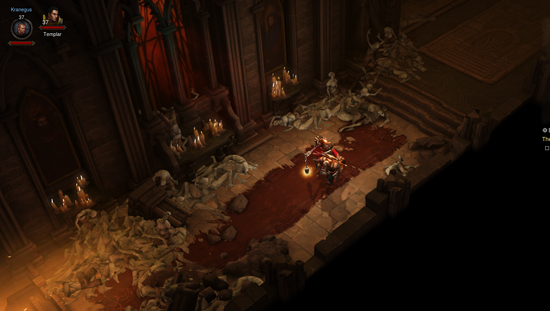
Health Potions have also be reworked. The hierarchy of potions has been removed. Instead Health Potions recover 60 percent of your overall hitpoints instantly, rather than healing a fixed amount of hitpoints.
Clans and communities will also be introduced with the expansion. Clans function as guilds but with limited functionality; currently advertised as granting a Clan-only chat channel while blasting players with notifications on clan member achievements and legendary drops. Though more functionality may be added, the only other benefit we can intuit is providing a safer environment for players to find others to cooperatively play with outside of their Friend's List. Communities on the other hand will serve as groups for liked minded or interested individuals, similar to Steam groups.
The Closing Act
Considering that Blizzard has given beta players access to Act V up to, but not including the final fight with Malthael, the expansion's primary antagonist; we've seen what it has to offer which is quite a lot. The many new areas of Westmarch proper and beyond are littered with dozens of new Events and additional lore; begging players to explore well beyond the static storyline route. In total, as expected, Act V is similar in size to Act II. Followers as characters within the game have also been further developed through Act V. Aside from the storyline related conversations, more context has been added to these characters through personally related conversations and side-quests. The Mystic, another artisan NPC, will also allow players to re-roll specific statistics on an item while also granting players the ability to augment the visual aspects of their character's appearance by "transmogrifying" individual pieces of gear to suit a desired aesthetic.
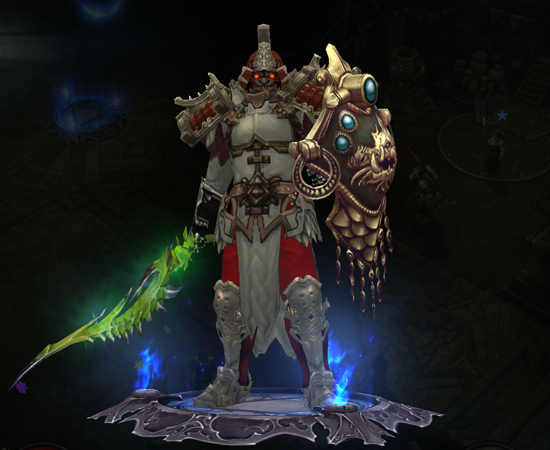
Aesthetically though, Act V fulfills a want for
Diablo III that is vacant in the base game. Something that looks and feels like
Diablo titles past.
With Reaper of Souls, we’re taking Diablo III back to its darker, deadlier roots,” said Mike Morhaime, CEO and co-founder of Blizzard Entertainment.
And Morhaime is absolutely correct in his estimation of what
Reaper of Souls brings to the fan base of
Diablo. Visually and aesthetically Act V is far more reminiscent of the dark shadow
Diablo and
Diablo II cast over the third title in the series. The color palette is much more naturally hued while most of the color saturation still present is limited to the lighting. Westmarch and the citizens within the city express the peril they know they are in, horror grips many of the non-player characters you'll meet throughout Act V, while the vacated streets are paved with the dead. In the catacombs of Westmarch, the ground in front of the furnaces is scratched black. The content overall is much more mature and dreadful than the previous four acts in
Diablo III.
In all, the beta gameplay gives players a glimpse of the bright future on the horizon for fans of the
Diablo series; it is almost vindicating for one disappointed by
Diablo III. Despite the well-known and well-covered shortcomings of the base game
Reaper of Souls along with Patch 2.0 offer a genuinely enjoyable experience that does an admirable job of recapturing the spirit of the
Diablo franchise which the base game seemed void of. Although it is still unknown whether the beta drop rates and experience gains reflect the release state of the expansion, loot will no longer be an issue for the player base. Even if the expansion after release doesn't pour magical items at your feet with the same volume of the current beta state, improvements to statistics generation based upon your class (the Smart Drop aspect of Loot 2.0) and the Mystics' ability to re-roll specific statistics on an item will pave over any frustrations players we over loot in
Diablo III.
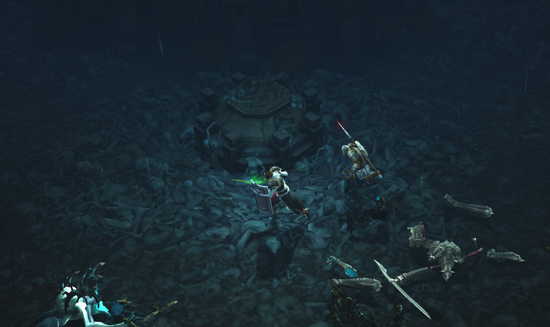
Of course concerns have arisen over our time in beta. For one, with the greater ability to augment specific items through the Mystic along with Smart Drops; continuity and replayability will have a greater potential for diminishing returns. Because of the level advancement structure in
Diablo III, there is no need to continually develop your character outside of gear as there is no infrastructure allowing you to. Granted as you level you unlock new abilities, and runes for those abilities, you aren't developing your character in a specified manner as you can change your skills and runes freely. Leaving
Diablo III with a singular aspect of continuity, different gear. Since Loot 2.0 streamlines the acquisition of class-oriented gear along with Adventure Mode providing shortcuts to Elite monsters with the added aspect of Bounties, character development will tap out much more quickly than before. Even with the redesigned Paragon system, once you hit 70 and you've obtained the gear you want there won't be much else to do but earn achievements and slay hordes of demons for the thrill of it all.







